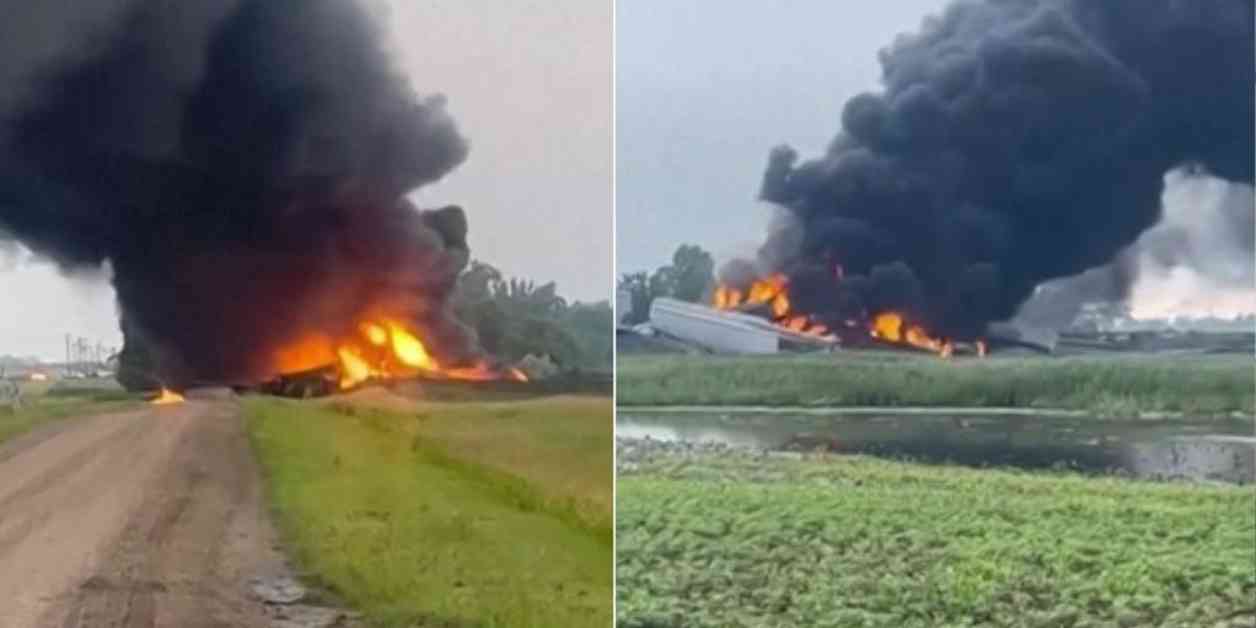A train derailment occurred in North Dakota where rail cars carrying hazardous materials caught fire. The incident took place in a marshy area surrounded by farmland, about 140 miles northwest of Fargo. According to Andrew Kirking, the emergency management director for Foster County, 29 cars of a Canadian Pacific Kansas City (CPKC) train derailed around 3:45 a.m. Intense flames and thick black smoke were visible at the scene, burning for at least 12 hours after the derailment. It seemed that 10 to 15 rail cars caught fire.
Responders were able to start fighting the flames later in the afternoon, having some success in bringing the fire under control. Although there were no reported injuries, the engineer and conductor managed to escape safely. The threat to nearby residents appeared to be minimal. The cars were carrying anhydrous ammonia, sulfur, and methanol, with ammonia posing the most significant risk, according to Bill Suess, the spill investigation program manager for the North Dakota Department of Environmental Quality.
Despite the hazardous materials involved, wind carried the smoke away from the nearby town of Bordulac, where approximately 20 residents live. Exposure to high concentrations of ammonia can have severe health effects such as burning of the eyes, nose, throat, and respiratory tract, leading to blindness, lung damage, or even death. Lower amounts of exposure can result in coughing and irritation of the nose and throat.
The National Transportation Safety Board is investigating the cause of the derailment. CPKC acquired Kansas City Southern for $31 billion in 2021 to create a rail network linking the U.S., Mexico, and Canada. CPKC has activated its emergency response plan and launched a comprehensive, coordinated response to the incident.
This derailment is the latest in a series of train accidents in the U.S., with previous incidents occurring in Matteson, Illinois, and Wyndmere, North Dakota. In these accidents, hazardous materials were also involved, causing evacuations and environmental concerns. The safety of railroads remains a topic of discussion as officials work to prevent future incidents and ensure the well-being of communities along rail lines.



